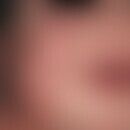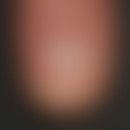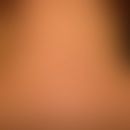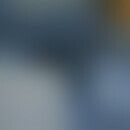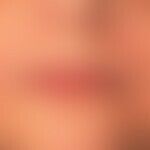General definitionThis section has been translated automatically.
- Facemodelling
:Removal of troublesome fat deposits in the lower cheek and lower chin area, especially in patients aged 18-25, using liposuction. Through a small incision (3-5 mm) or with the help of cannulas, tumescent local anesthesia is first injected. Then a fine cannula is inserted, which carefully sucks out the fat cells on the spot. In order to avoid lasting skin irregularities and to achieve a future smooth skin surface, the use of ultra-fine cannulas (diameter 2.0 mm/3.0 mm) is particularly important. - Liposuction (face)
:Through incisions directly under the earlobes and under the chin, the fat can be suctioned up to the lower half of the cheek region. A chin bandage must be worn for a week as a pressure bandage. Swelling and bruising last for about two to three weeks. - Liposuction (neck and nape of the neck)
: In the case of fat deposits on the neck and nape of the neck, these can be remodelled by liposuction. However, this indication can only be performed by very experienced surgeons. The small incisions for the cannulas are located under the earlobes, under the chin, in the neck at the hairline. Pressure bandage for one week. - Wrinkle treatment with filling materials
:The ideal filling material is biocompatible, without allergenic potential, has a good long-term result, no side effects and a natural appearance. It should also stimulate elastic fibers in the connective tissue, not cause any loss of work for the patient and be cost effective. The available materials differ in the filling effect that can be achieved with them, the long-term and the side effects. The results after implantation of biological materials are limited in time. Synthetic filling materials have a good long-term result, but also involve a higher risk of foreign body reaction, which is extremely difficult to treat. - Implantation of tissue substitutes
:Various methods are available for the correction of wrinkles, depending on their location. In the area of skin wrinkles, the dermis thins out, so that an improvement can only be achieved by injections or tightening. Various possible procedures are listed below:- Implantation of the patient's own fat
- Implantation of dermis fat:
The dermis fat grafts belong to the free grafts which are exclusively supplied by the local vascular connection.
If the entire lip area is to be harmonized, a narrow dermis fat strip (e.g. taken preauricularly) is inserted into the lips through an incision in the corner of the mouth in a light surgical procedure. To obtain a dermis fat strip, the epidermis in the selected area is abraded preoperatively with a dermabrasion device. The excision follows afterwards. Advantage: No allergy, long durability.
Disadvantage: Possible palpable hardening, risk of migration cannot be excluded. - Implantation of denatured collagen and polymethylmethacrylates (e.g. Artecoll): This implant contains two components: First, it contains collagen, which is the organic phase of the implant and is the substrate solution of the second product. The second component is PMMA (polymethyl methacrylate) and contained in the form of microspheres with an average diameter of 30 μm. Since Artecoll contains collagen, as with all other bovine collagen materials, a skin test must be performed at least 4 weeks prior to treatment. Test region is the volar forearm. Caution. Foreign body reaction. Indication: Deep nasolabial folds, chin wrinkles, drooping corners of the mouth, vertical glabellar folds and stretchy, soft scars. Not indicated: In thin, atrophic skin, wrinkles in the periorbital area, ice-pick.
Injection technique: 25-27 gauge cannula; placement in the reticular dermis; if injected too superficially, permanent overcorrection, livid discoloration and nodulation will occur. Subdermal injection of excessive amounts may result in lipogranulomas. Optimal is the use of the micro-droplet technique for injection: smallest amounts are injected into the lower dermis at a distance of 1-2 mm below the wrinkle. Corrections should only be carried out after 8 weeks. The permanent effect due to permanent tissue augmentation is considered an advantage by some authors; however, the majority of practitioners are opposed to permanent implants in the form of acrylic beads. - Hyaluronic acid:
Injectable polysaccharides that can be applied dermally and subcutaneously.
These polymers are supposed to support or influence regenerative processes of the connective tissue. This process is called matrix engineering. Injectable hyaluronic acid is extracted from cock combs (e.g. Hylaform) or genetically engineered from bacterial cultures (e.g. Restylane). Allergic reactions to hyaluronic acid are not known, therefore no allergen testing is necessary before corrective treatment. Room temperature is sufficient for storage of the preparations.
Indications are e.g. superficial scarring conditions and age-related wrinkles. Combination with other injection materials is possible (sandwich technique). Injection technique: Injection with 30 gauge needles into the middle dermis without overcorrection. Both injection techniques can be used: punctual and linear (tunnel technique). The gel can be distributed by subsequent massage. Experience shows that the effect lasts about 6-8 months (hyaluronic acid is completely degraded over time), then the treatment may have to be repeated. - Poly-L-lactic acid (e.g. New-Fill): Compared to other completely degradable tissue substitutes, poly-L-lactic acid not only causes the complete filling of the tissue, but also induces the formation of new collagen fibres, so that the overall effectiveness is comparatively long (up to 2 years). While the lactic acid gel slowly degrades, soft healthy connective tissue thus also grows back. Usually 2 treatments are necessary at intervals of 4-6 weeks. Allergic reactions to the completely synthetically produced poly-L-lactic acid are not known, therefore no allergen testing is necessary before corrective treatment.
- Gore-Tex: The requirement criteria for implantation materials such as easily sculptable, non-carcinogenic, no allergenic potency, easily removable, tissue-integrated, biocompatible, versatile usability and availability in sufficient quantity, was fulfilled by polytetrafluoroethylene (Gore-Tex).
Depending on the Gore-Tex form, there are different techniques. In the case of Gore-Tex sheets, the implants should be placed on top of each other over the entire surface. For lip augmentation, Gore-Tex threads are inserted percutaneously into pockets with needles. Due to the porous material, infections and suppurations may occur, which can only be treated by removal. After 3-4 months, new material can be inserted again.
- Injection of neurotoxic substances(botulinum toxin)
:The treatment of expression lines, which has been introduced since the 1960s, has become increasingly popular in recent years.
By means of a neurotoxic denervation of certain muscles, expression lines can be reversibly eliminated. This therapeutic procedure is approved in Germany, among others, for idiopathic blepharospasm, torticollis spasmodicus, pointed foot position (equinovalgus deformity), focal spasticity of the hand or wrist, hyperhidrosis axillaris and is widely used in the treatment of wrinkles. The effect appears after 48-72 hours; maximum after 1-2 weeks; duration: 4-6 months. Since 1.3.2006 the preparation "Vistabel" is approved for the treatment of glabellar wrinkles.
There is no evidence of permanent degenerative or atrophic changes, despite multiple injections over a long period of time.- Dilution of 100 U Botox (off-label use ): Careful addition of 5 ml NaCl solution. Consequently, 2 U of Botox are obtained per 0.1 ml. Ready-to-use solutions can be stored at 4-8 °C for up to 5 weeks without loss of efficacy (authors and operators are not yet in agreement on this subject).
- Dilution of 500 U Dysport: Careful addition of 2.5 ml NaCl solution to obtain the desired solution of 20 U per 0.1 ml. This solution can be diluted to give a solution containing 10 U/0.1 ml. There are two ways to do this: 2.5 ml of the stock Dysport solution is made up with 2.5 ml of NaCl in an additional 5 ml syringe. This is then transferred to 1 ml syringes with 0.1 ml scale and used directly for injection. Alternative: 0.5 ml of the Dysport stock solution is made up into a 1 ml syringe containing 0.5 ml NaCl. A superficial injection with a 30 gauge needle is sufficient instead of the so often described technique of "advancing through the muscle to the periosteum and then withdrawing a little", because after the amount injected has passed it infiltrates into the subcutis. Above the eyebrows, spreading of the injection fluid should be avoided to minimize the formation of ptosis. Injection amounts: Botox: 2-5 U per injection site (maximum dose: 100 U) Dysport: 10 U per injection site (maximum dose: 230 U).
Note(s)This section has been translated automatically.
Remember! Pre-operative: information about side effects (ptosis of the eyebrows and upper eyelid, bleeding at the injection sites, feeling of pressure in the forehead area, diplopia). The side effects are temporary, i.e. lasting from days to several weeks. Ask the patient to activate the muscles to be treated to locate the optimal injection area.
